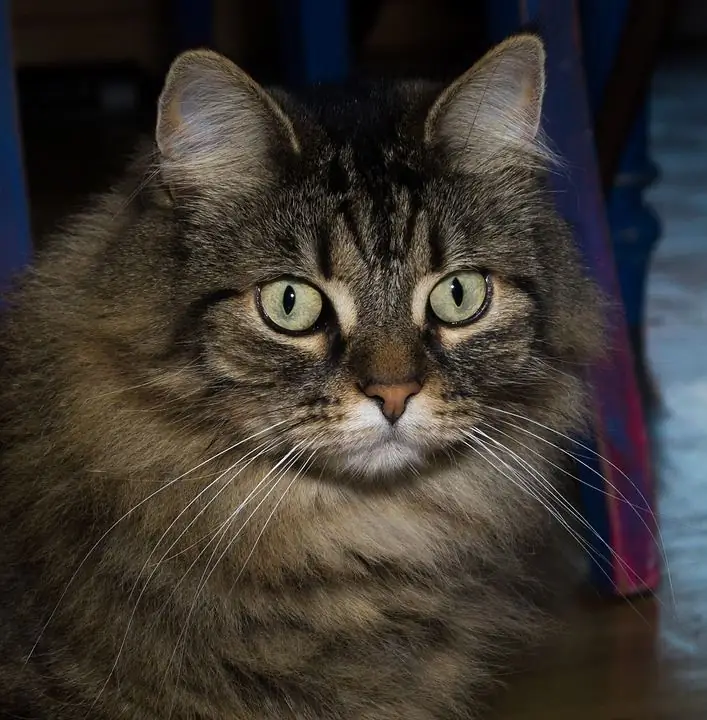2026 Author: Priscilla Miln | [email protected]. Last modified: 2025-01-22 17:55:21
This luxurious fluffy cat is widely distributed in the Nordic countries. In Norway, it is better known as Skogkatter and Norsk Skogkatt. A very beautiful animal combines several unusual qualities. At home, it is a close and gentle friend even for a small child, an affectionate pet for the whole family. On the street - a hardy beast and a strong hunter.
Due to the independent nature and amazing natural beauty, this breed is very popular and famous in European countries. Today we will introduce you to the main features of the Norwegian Forest cat breed and the conditions of keeping these animals, since this beauty is still quite rare in our country.

A bit of history
There are many versions about the origin of this breed. The Norwegian Forest Cat, according to one of them, is a descendant of the Angora cats, which were brought to the territory of Norway by the Vikings. Caught in harshScandinavian climate, these animals naturally interbred with native shorthairs.
Adaptation to bad weather and cold was accompanied by the appearance of a thick undercoat in the animal, the development of dexterity and endurance. Unfavorable climatic conditions also affected the size of these animals.
Specialists consider another version of the origin of the breed in question less reliable. The Norwegian Forest Cat is the result of crossing a domestic cat with a lynx. In favor of such an original version, the animal's ability to climb tall trees with surprising deftness, as well as characteristic "tassels" on the ears and well-developed, powerful and predatory claws are given.

At the beginning of the last century, after active crossing with representatives of other breeds, the Norwegian Forest Cat (we posted a photo of the animals in the article) was on the verge of complete extermination. The ban on interbreeding helped to correct the situation. In the XX century, this breed was officially registered. The Norwegian Forest Cat has been recognized as experimental by FIFE.
From that time on, active breeding of purebred animals began in their homeland and in other countries. Today the breed is recognized by all felinological organizations in the world.
Description and photo of the Norwegian Forest Cat
The appearance of these magnificent animals harmoniously combines the tenderness of a pet with the endurance and grace of a Scandinavian predator. This is a very beautiful animal due to the unique characteristics of the exterior.has long and firmly occupies a leading position among many well-known, widespread and popular breeds of domestic cats.
At first glance, there is nothing extraordinary in the characteristics of the Norwegian Forest cat breed - no strange proportions, no unusual muzzle, no twisted coat, no intricate ears. However, this is the very zest for which animals are so loved and appreciated. A real forest animal is exactly what it should be: a muscular strong body, natural correct proportions, powerful chest.
The Norwegian Forest is a fast and agile animal with a slightly stretched body and high hind limbs, due to which the croup is slightly raised above the shoulder blades, a tucked up belly, stable dense paws with strong fingers and powerful sharp claws. Slightly larger than the average size of the representatives of this breed. The Norwegian Forest cat is not a giant, it is much smaller than Coons and even Siberian cats.

These beauties differ from Siberians not only in size. Norwegian cats have higher cheekbones, almond-shaped eyes, while Siberians have oval ones, in addition, they have a straight profile without a sharp transition, and a more accurate and gentle muzzle.
Norwegian's tail is noticeably longer and better furred. Due to their strong constitution and fluffy fur, Norwegians seem to be very large, although the weight of an adult cat does not exceed nine kilograms, and cats - seven. Sexual dimorphism is obvious - the cats are much larger, more fluffy, the chest is wider, the muzzle is more serious, the paws are more powerful.
Woolcover
The long coat of this animal with a well-developed undercoat delights: fluffy pants on the back of the paws, a powerful mane on the chest and neck, and a long thick coat adorns the tail. The Norwegian Forest cat breed standard welcomes tassels on the ears and between the toes, but their absence is not considered a defect. The hairs are not soft and thin to the touch - the Norwegian fur coat perfectly retains heat and repels water. It never tangles, unlike the soft fur of longhaired breeds.
The Norwegian Forest cat, often featured on the cover of animal magazines, matures slowly, so it doesn't reach full development until the age of five.
Wool type
The feature of the Norwegian Forest cat is its multi-layer outer coat and thick, well-retaining undercoat. The guard hairs are quite long. They are located in the tail area and along the ridge. Wool has pronounced water-repellent properties.
The breast coat is made up of three sections:
- luxury sideburns and bib;
- neck collar;
- fluffy "breeches" on the hind legs.
Wool can be denser in winter than in summer. Softer coats are allowed in shaded, solid and bicolor animals.

Forest cat color
Prospective owners should be aware that wool quality and type are more important characteristics than color and pattern when judged by experts. The color of the representatives of the breedmay be different, but the presence of point marks in the area of the tail, paws, muzzle and ears of the animal is mandatory. The taba pattern is characterized by expressiveness and clarity. According to the FIFE standards, the color of this breed includes four main groups:
- with agouti factor;
- no agouti factor;
- agouti factor and white color;
- white without the agouti factor.
The breed standard does not allow hybridization of colors - sable, chocolate, lilac and lavender, as well as fawn and cinnamon, or a combination of them with white. The color of the eyes of a purebred animal must match the color of the coat. In animals with agouti factor, the nose should have a border. You can see how it looks in the photo above.
Norwegian forest cat breed: character description
Description of the breed, of course, will be incomplete without mentioning the nature and abilities of animals. The appearance of graceful creatures is truly beautiful. But not only for a presentable appearance people fell in love with them. The character of the Norwegians is rather mild, and the animal is naturally endowed with good manners. They are gentle, friendly and quickly attached to the owners of pets, although they never impose their company if the owner is busy.
The breed is categorized as intelligent but extremely playful. These beauties do not really need a big company for games - if necessary, they can have fun on their own without causing much damage to the owner's home. Such a pet retains a cheerful disposition and playfulness throughout life.

Lifespan
The average Norwegian Forest cat lives between 15 and 18 years. True, there are cases when, under ideal conditions, animals became long-lived and lived up to 22 years.
Content: care and hygiene
Does not require special conditions of care affectionate, loyal and very gentle Norwegian Forest cat. Care and feeding are the main requirements, following which you will provide this northern beauty with a comfortable stay in your home.
Wool needs special care only during the period of active molting. It should be combed out at this time three to four times a week. In order to maintain the undercoat in good condition, the animal should be given special vitamin and mineral complexes. They are prescribed by a veterinarian. Before participating in exhibitions, the animal is bathed using a special shampoo for long-haired breeds.
To prevent otitis, fungal and bacterial infections, regular preventive examinations and cleaning of the ears using typed lotions, sprays and creams should be carried out. Sharp claws are cut with nail clippers.

What to feed a forest cat?
The quality of the coat and the overall he alth of the animal depend on proper care and nutrition. Veterinarians recommend feeding the Norwegian Forest Cat a fully balanced, ready-to-eat food designed for cats that do not lead a very active lifestyle, or formulas with a reduced calorie content. Today the choice ofThe amount of food is large, so it is best to consult your veterinarian - he will recommend the most suitable option for your pet according to the age and state of his he alth.
If you prefer to feed your pet with natural products, then you should know that the animal's diet should include:
- lean meat;
- boneless sea fish;
- low-fat fermented milk and dairy products;
- greens and vegetables.
The diet must be enriched with minerals, vitamins, and cat grass. Once every three months, the animal needs to be dewormed.
Forest cat he alth
Even with perfect care and maintenance, the Norwegian Forest Cat is not immune from disease. Possible hereditary diseases of this breed include glycogenosis and hypertrophic cardiomyopathy. With severe malfunctions in the work of the heart, sudden death of the animal, pulmonary edema is possible.
Enzymatic deficiency, which accompanies glycogenosis, provokes the accumulation of glycogen and, as a result, disorders in all organs and systems of the cat's body. There is no effective treatment for these pathologies yet. The disqualifying faults of this breed are:
- square muzzle;
- pronounced nasal break;
- long and rectangular case;
- wrong number of toes;
- kinks and other tail defects;
- strabismus;
- undershot or undershot jaw;
- color hybridization.
Where to buy forestcat?
You need to know that in our country the standard allows almost all colors, with the exception of chocolate, lilac and Siamese. A thoroughbred kitten of the Norwegian Forest cat is still quite difficult to acquire. Despite the increased demand for these animals, not many Russian catteries can offer kittens.
If you plan to purchase a purebred animal that will be allowed for breeding and will become a participant in exhibitions, then you should contact only nurseries. According to experts, MaxMur in Moscow and North Silver in St. Petersburg have proven themselves to date.

What to look for when buying?
The kitten should be active, agile, have a good appetite, be not too fat, but not exhausted. The coat must meet breed standards for length and color. A he althy baby has clean eyes and ears, a clear look, and a shiny, bald-free coat.
When purchasing a kitten, pay attention to the maintenance of all animals in the cattery, and also find out their daily diet. This will help you properly organize the feeding of the baby in the new home. In well-established catteries or responsible breeders, forest breed kittens are sold only when they reach three months of age.
The animal you choose must have all accompanying documents, including a veterinary passport and a pedigree. In addition, a sale and purchase agreement must be concluded and correctly executed legally.
How much does a forest cat cost?
Currently, the average cost of a purebred forest cat kitten with good conformation data ranges from 10 to 50 thousand rubles. This amount depends on the rarity of the coat color of the animal, as well as on the prestige of the nursery, class. If you do not plan to breed Norwegian Forest and expect to spay or castrate your pet in the future, its cost will be lower.
Owner Reviews
In their opinion about the forest cat, the owners are almost unanimous. They believe that this breed, like no other, is suitable for keeping in a city apartment or in private households. Experienced owners recommend paying special attention to timely vaccination, preventive procedures, which include insectoacaricidal treatment and deworming, to maintain the appearance and he alth of the Norwegian Forest Beauty.
Beginning owners quite often experience difficulties with their pet during the annual molt. In this case, there can be only one advice - comb your pet up to three or four times a week. Problems will go away by themselves, tangles will not form.
Most of the owners are sure that the nutrition of the forest cat must be monitored especially carefully. The diet of the animal should be as balanced and he althy as possible. Do not feed the cat from the general table, exclude fried, fatty, sweet, spicy or pickled foods from the animal's diet.
Forest cat owners warn that representatives of this breed, unlikefrom many of their relatives, it is necessary to provide fairly intense, regular physical and intellectual stress. This is due to the endurance of the breed and well-developed mental abilities. Cats respond well to walks on a harness with a leash.
Recommended:
Angora cat: photo, breed description, character
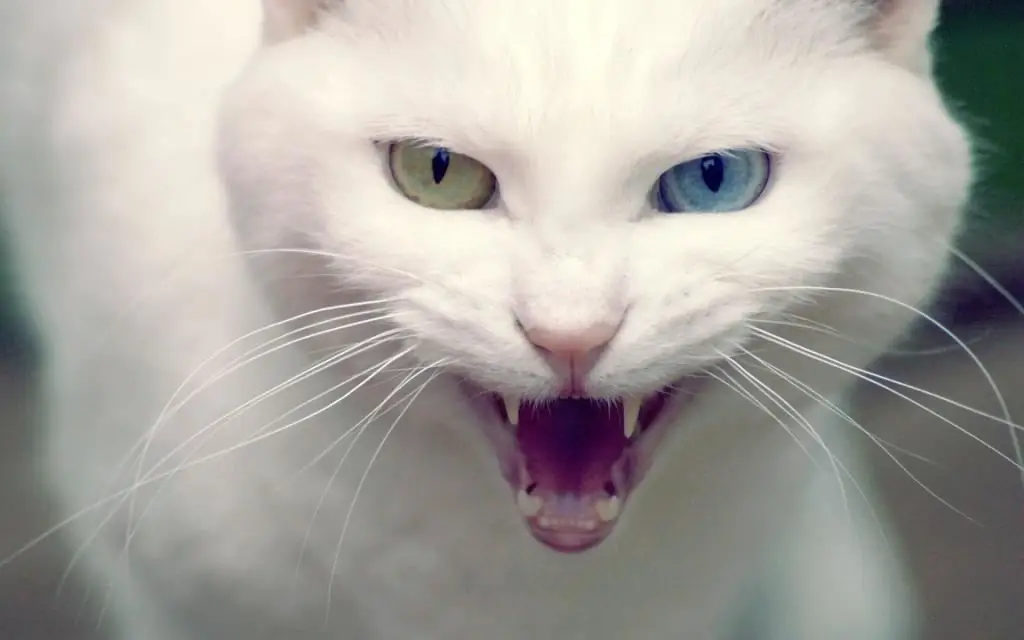
Turkish Angora has long won worldwide fame. It is distinguished not only by a surprisingly delicate coat, but also by a wonderful character. Numerous catteries around the world breed both classic pure white animals and many colored ones. The number of fans, intelligent and highly athletic pets, provides them with a secure future. Oblivion does not threaten the breed
Thai cat: breed description, character, photo

Since ancient times, the Thai breed cat was included in the category of sacred animals. The owners of such unusual pets were mainly heads of state and the intelligentsia. Animals belonged to the "servants" of Buddhist temples and were present at secret rites
Jack Russell Terrier: breed description, photo and character. Pros and Cons of the Jack Russell Terrier Breed
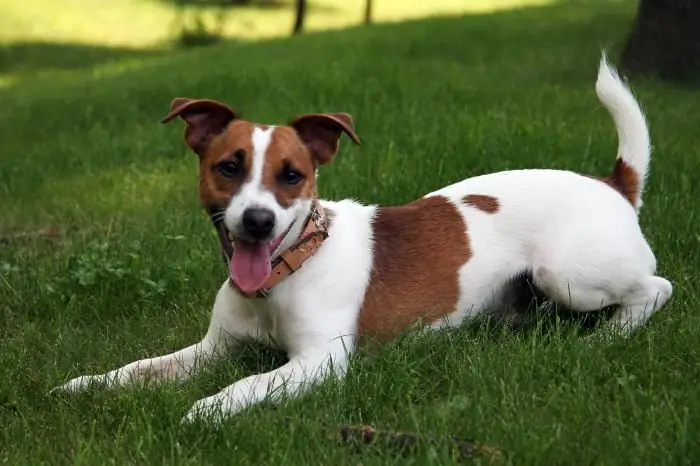
There is probably no more playful, active and interesting dog than the Jack Russell Terrier. This is exactly the funny shorty who tried on the green mask in the film of the same name with Jim Carrey. In its historical homeland, this breed is very popular, but it came to us not so long ago, but managed to become one of the favorite family dogs
Scottish Straight cat: breed description, character, photo
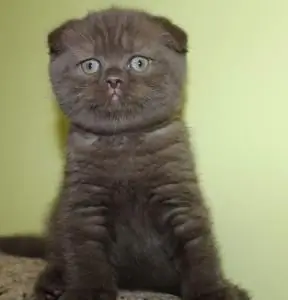
Cats and dogs are loved by many people. It is widely believed that the propensity for one of these two types of pets depends on the authoritarianism of the person himself. They say that dogs are bred by people who want to be unquestioningly obeyed, and cats are bred by those who value personal freedom and are ready to put up with character flaws, with uncomfortable habits and manifestations of independence in exchange for clearly voluntary manifestations of affection
British cat breed: breed description and character
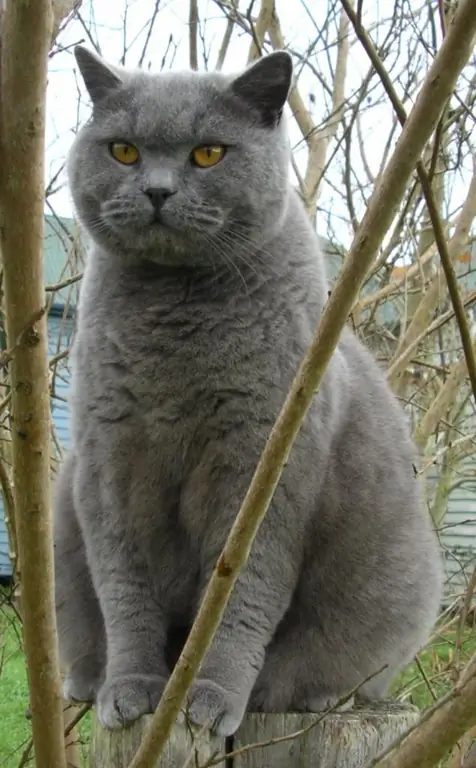
Let's talk about cats. These beautiful animals are very popular. Many people prefer to have such a pet in their home. Of course, like other representatives of the fauna, cats have their own character, which leaves an imprint on their appearance, behavior

